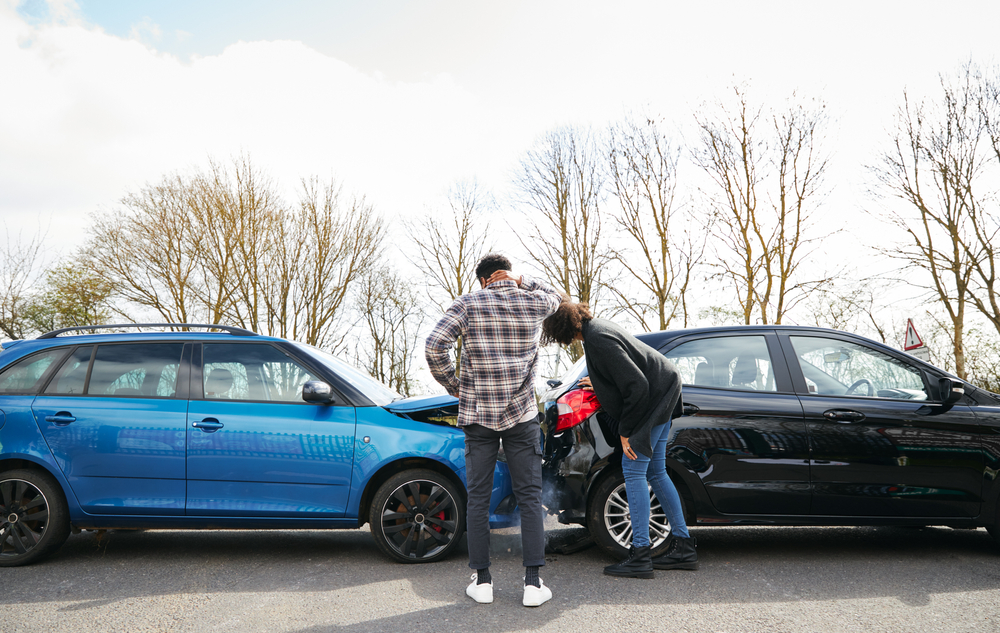
In the event of a rear-end collision where you’ve collided with a car that stopped abruptly, it’s natural to question who is at fault. Typically, the driver who rear-ends another vehicle is presumed to be responsible for not maintaining a safe following distance, as every driver is expected to follow the vehicle ahead at a distance that allows for a safe stop. Understanding fault in these scenarios is crucial, especially when considering the potential for traffic citations, insurance claims, and liability issues that can arise from such incidents.
It’s important to be aware that fault isn’t always clear-cut in rear-end accidents. Although you might assume full responsibility for hitting the car in front, there can be exceptions. Certain circumstances could partially or fully shift the blame onto the driver who stopped suddenly, such as sudden and unpredictable behavior, mechanical failures, or other contributing factors.
In dealing with the aftermath of a rear-end collision, it’s essential to take necessary actions to resolve the situation responsibly. This includes exchanging necessary information with the other driver, documenting the scene, reporting the incident to the authorities if appropriate, and contacting your insurance company. While navigating these steps, it’s advised to seek professional guidance to ensure that your rights are protected and responsibilities are clearly understood.
Understanding Rear-End Collisions
Rear-end collisions are among the most common types of vehicle accidents, often resulting from a combination of sudden stopping and insufficient following distance. Your actions post-collision and the legal repercussions depend on the specific circumstances of the incident.
Typical Causes
- Following too closely: Ensure adequate space between your vehicle and the one ahead to react and stop safely.
- Distraction: Cell phone use, eating, or any activity taking your focus off the road can prevent timely reaction to sudden stops.
- Abrupt stops: In instances where the leading vehicle stops abruptly, your attention to traffic patterns is critical.
- Weather Conditions: Wet or icy roads increase stopping distances, demanding greater vigilance and reduced speeds.
Legal Considerations
- Fault Assignment: In most rear-end collisions, the trailing driver is deemed at fault for not maintaining a safe distance or reacting in time. However, every scenario is unique and contributing factors are considered.
- Nevada Law: Nevada follows a modified comparative negligence rule, meaning your ability to recover compensation can be reduced by your percentage of fault.
- Insurance: Report the incident to your insurance company, as it’s a key player in the fault and compensation process.
Immediate Actions to Take
- Assess for Injuries: Check yourself and others involved for injuries. Prioritize medical assistance if needed.
- Move to Safety: If possible, move vehicles out of traffic to a safe location.
- Exchange Information: Swap contact and insurance details with the other driver(s).
- Document the Scene: Take photos of the vehicle positions, damages, and any relevant road signs or signals.
- File a Police Report: Required in Nevada if the accident results in injury, death, or significant property damage.
- Avoid Admissions of Fault: Statements made at the scene can later be used in legal proceedings. Speak factually about the incident.
Remember, your immediate response can significantly influence the management of the aftermath of a rear-end collision.
Navigating Insurance and Repairs
After a rear-end collision, it’s crucial to handle insurance claims and repairs efficiently. Your next steps are key in managing the fallout of the accident and ensuring a smooth path to getting your vehicle back on the road.
Filing an Insurance Claim
When you rear-end someone after a sudden stop, report the accident to your insurance provider immediately. In Nevada:
- Notify your insurer promptly: Delays can complicate the claims process.
- Document the incident: Take photos and gather witness statements.
- Understand comparative negligence: If you share fault, this may affect your claim.
Compile all necessary documents, including a police report if one was filed, before reaching out to your insurance company.
Dealing with Vehicle Repairs
Once your insurance claim is underway, you’ll need to address vehicle repairs:
- Choose a reputable repair shop: Get estimates from licensed mechanics.
- Review your policy: Understand what’s covered, especially if you share fault.
Keep a record of all repair quotes and invoices. These will be essential for reimbursement from your insurance company.
Understanding Nevada’s Insurance Laws
Nevada’s insurance laws can influence your claim and liability:
- Fault state: Nevada’s at-fault system means the driver who caused the crash bears financial responsibility.
- Minimum insurance requirements: You must carry liability insurance to drive legally.
- Subrogation: Your insurer may seek payment from the at-fault driver’s insurance after covering your initial costs.
Be aware of these laws to navigate your insurance claim effectively and manage your vehicle’s repairs after a rear-end collision in Nevada.
If you are looking for legal advice and awareness on Las Vegas Personal Injury Lawyer or Las Vegas Car Accident Lawyer click here to contact us.
